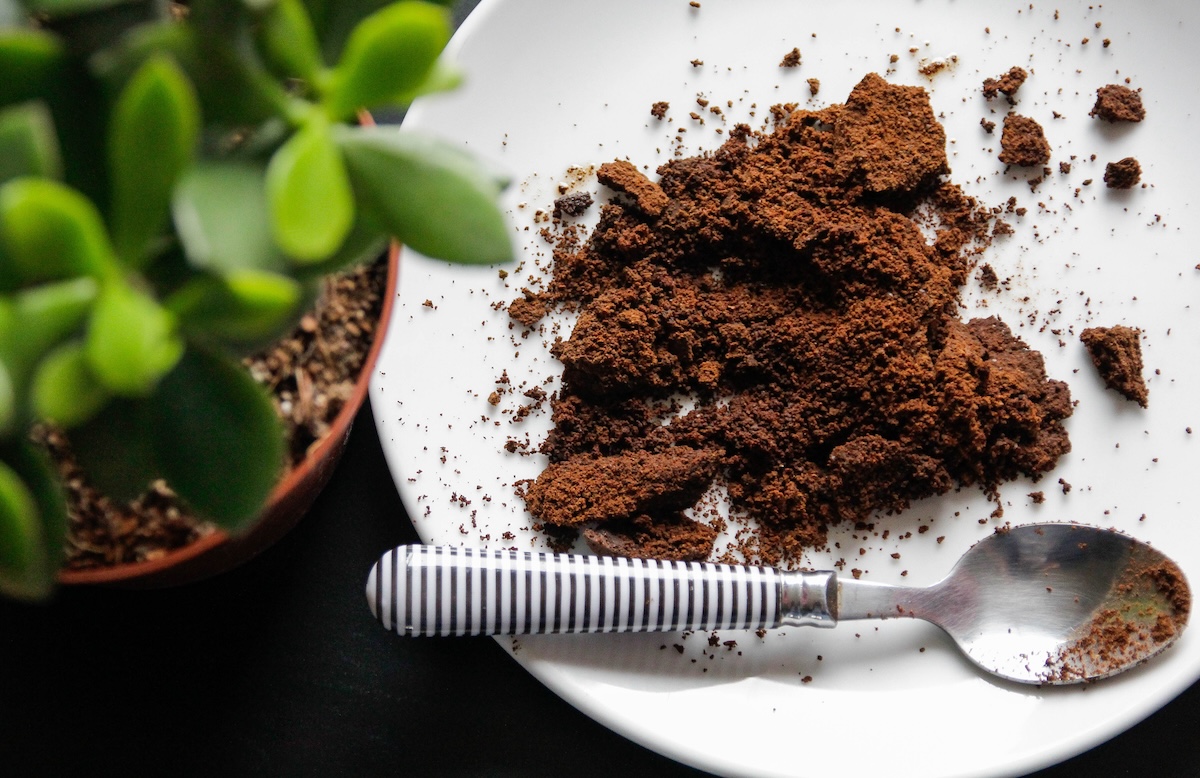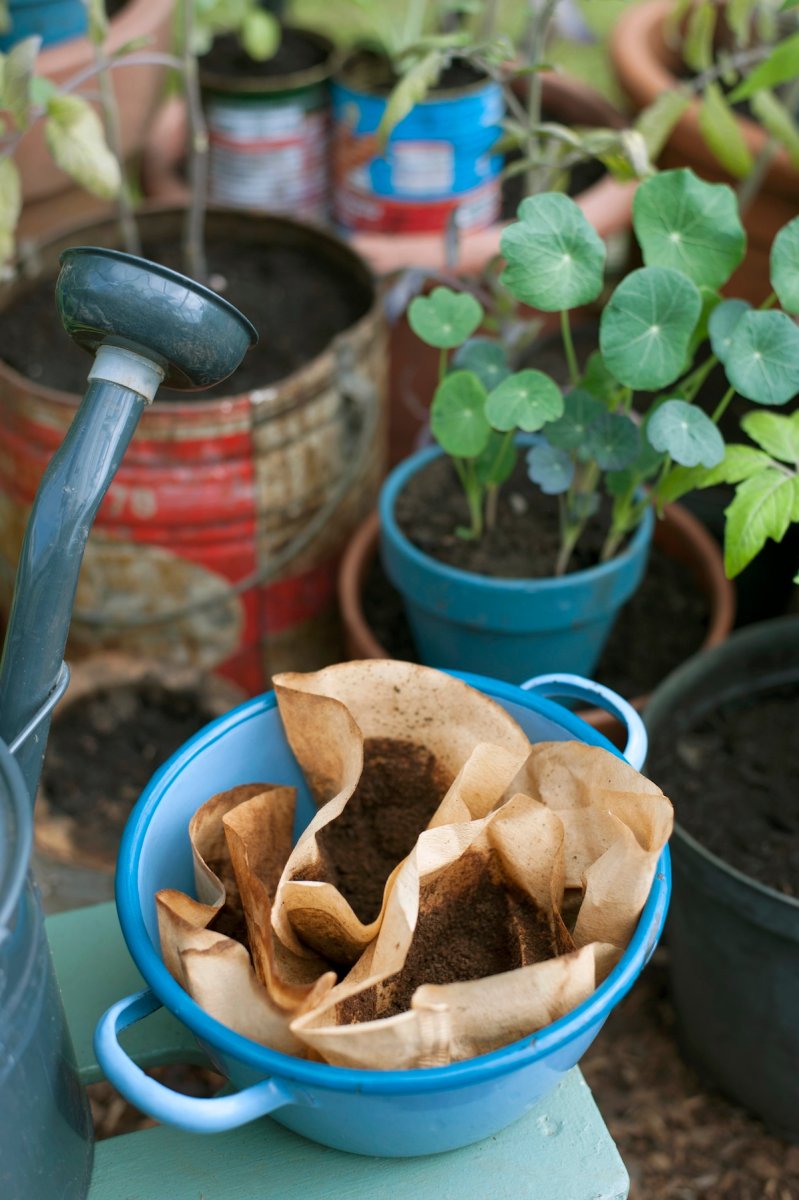Coffee grounds are often touted as a way to greatly lower the pH of your garden soil. Unfortunately, that’s a bit of a fallacy: While they can add a bit of acidity to your soil, coffee grounds won’t significantly swing a garden bed’s pH balance.
So, are coffee grounds good for plants? Yes, they can increase acidity a tad, and apart from that benefit, they can supply plants with small amounts of calcium, magnesium, phosphorus, and potassium. Grounds also can contribute tiny amounts of iron, copper, manganese, and zinc. Another benefit of this oft-discarded material is that it feeds soil microbes, which help to keep the soil healthy. Ahead, learn what plants like coffee grounds.
5 Outdoor Plants That Like Coffee Grounds
These landscape plants do best in acidic soil, and so amending their growing space by adding coffee grounds in the garden might lower the pH a touch and for a short time. If you’re not sure about your soil’s pH, consider purchasing a soil tester that can give you a baseline level.
Azalea (Rhododendron spp.)
Azalea is a beautifully flowering species of shrub in the same family as rhododendron. Azaleas and rhododendrons like a moist, acidic growing medium that’s rich and compost-heavy, so improving the soil’s health with coffee grounds might help them survive and help them put on a spectacularly colorful spring display. Mix coffee grounds with compost and the top of the soil.
Japanese Maple (Acer palmatum)
Slow-growing Japanese maples are admired for their stunningly colorful leaves, which, depending on the cultivar, can change throughout the year. Given the right conditions—mild temperatures, dappled shade, and rich, moist soil—this small shrub or tree will put on a gorgeous fall display. Give Japanese maples the best shot at providing autumnal nirvana by mixing small amounts of coffee grounds into the soil above their roots.
Hydrangea (Hydrangea spp.)
Another beautiful bloomer that does well in acidic soil, hydrangea needs consistent moisture and rich soil augmented by organic material such as coffee grounds and other compost. These large, ornamental shrubs reward care and attention with huge clusters of stunning blooms in blue, pink, and purple. Sprinkle coffee grounds around your hydrangeas a few times a year and work them gently into the soil.
Japanese Spurge (Pachysandra terminalis)
This shade-loving groundcover likes moist, acidic soil that provides plenty of nutrition. A member of the boxwood family, pachysandra produces small white flowers in the spring. It likes lots of irrigation when establishing itself, and then can get by on less water and even endure drought conditions. Add compost that includes coffee grounds as part of routine care to help keep good soil drainage.
Marigold (Tagetes spp.)
These pretty annuals bloom all summer long in gold, orange, red, yellow, and white. Marigolds grow best in slightly acidic soil, so mix in a few coffee grounds, but don’t go overboard. Native to Mexico and Central and South America, marigolds are fast-growing and like full sun.

5 Houseplants That Like Coffee Grounds
Can you use coffee grounds in potted plants? Some houseplants like acidic soil, and might benefit in the short-term from fertilizer with coffee grounds. You also make coffee ground tea to pour on indoor or outdoor plants. Additionally, some gardeners sprinkle coffee grounds on the soil surface of their indoor pots, saying the grounds deter pests such as spider mites.
Croton (Codiaeum variegatum)
Striped or dotted depending on the variety, colorful croton can add brilliance and whimsy to a brightly lit area of your home. A few coffee grounds now and then will give this acid-loving plant the soil it prefers. Keep the plant’s soil moist, but well-draining, too, for success with this tropical beauty.
African Violet (Streptocarpus sect. Saintpaulia)
This beloved, timeless houseplant, also called its former species name of Saintpaulia, is cherished for its velvety leaves and delicate purple flowers. African violets can better absorb nutrients and grow healthier roots if they’re grown in slightly acidic soil, so lightly sprinkle used coffee grounds to help create bountiful lavender blooms.
Philodendron (Philodendron spp.)
Whichever of the hundreds of species of philodendron you’re growing, it almost certainly likes acidic soil, which helps prevent root rot in this plant. Native to Central and South America, philodendron is low-maintenance, preferring bright but indirect light. Moisture needs vary among the species, so check for specifics regarding your plant.
Snake Plant (Dracaena trifasciata)
Snake plants are fairly tolerant of a variety of growing conditions, although they do best with 8 to 10 hours of indirect sunlight each day. If the soil your snake plant is growing in is too alkaline, consider adding a spoonful of coffee grounds once a month. Again, moderation is best.
Prayer Plant (Marantana leuconeura)
The prayer plant is a favorite of houseplant enthusiasts because of its large, colorfully patterned leaves that at nighttime fold together like praying hands. The Brazilian native does best in slightly acidic soil, and a spoonful of coffee grounds once a month will likely be enough to keep it healthy.
5 Vegetable Plants That Like Coffee Grounds

If the pH of the soil in your vegetable garden runs high, you might want to set aside an area specifically for vegetable plants that prefer a lower pH. Coffee grounds would be a good fertilizer or compost addition for the soil in the area designated for these veggies. Ahead, learn what vegetables like coffee grounds.
Potato (Solanum tuberosum)
Grown in the proper soil, potatoes are less susceptible to diseases such as potato scab, a bacterial problem that causes rough, corky patches on the potato’s skin. Generally, potatoes are easy to grow—just augment your soil with coffee grounds and nutrient-rich compost to make sure the soil provides the healthiest foundation.
Fennel (Foeniculum vulgare)
This anise-flavored vegetable/herb does best in soils with neutral pH or levels as low as 5.0, and it likes rich, healthy soils, which can be brought about with the addition of compost including coffee grounds. If the pH of the soil in which fennel is grown is too high, the plant will be unable to take up sufficient iron and manganese, which can reduce flavor intensity. Plant fennel in full sun and give it lots of water.
Cabbage (Brassica oleracea var. capitata)
This cool-weather crop benefits from slightly acidic soil, which enables the plant to maximize nutrient uptake. But take care not to reduce the pH by too much, as pH levels below 5.7 can cause clubfoot, a fungal disease, to proliferate. It’s best to maintain an ideal pH level of 6.0 to 6.8 for cabbage.
Carrot (Daucus carota subsp. sativus)
Carrots do best in soil just slightly on the acidic side, so a few coffee grounds mixed into neutral soil might be just the ticket. This tasty root vegetable likes deep, loose soil that is free of stones and other impediments. They tolerate a bit of light shade, but really like full sun.
Eggplant (Solanum melongena)
Plant these prolific purple fruits in rich soil that’s high in organic matter, including some coffee grounds, and you’ll be eating eggplant parmesan all summer long. A slightly acidic soil enables eggplant to more productively utilize key nutrients like nitrogen, phosphorus, potassium, iron, and manganese. Slightly acidic soils can also suppress pathogens that eggplant is susceptible to.



